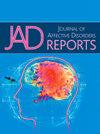儿童虐待、自残和疼痛敏感性之间的关联:一项横断面研究
Q3 Psychology
引用次数: 0
摘要
儿童虐待是一个重大的公共卫生问题,并与青少年的自我伤害有关。自残是公认的自杀最有力的预测因素。据报道,疼痛敏感性降低与儿童虐待之间存在关联。我们以前已经表明,疼痛低敏感性是一个强大的特征,青少年生活在住宿照顾与自残。在这里,我们在这个样本中探讨童年不良经历(ACE)、自我伤害和疼痛敏感性之间的关系。方法48例青少年(13 ~ 17岁)完成ACE 10项量表,采用标准化定量感觉测试(QST)方法进行测试。参与者根据过去一年遭受虐待的亚型(例如,身体虐待还是性虐待)和自残的频率进行分类。采用有序回归、线性回归和独立样本t检验检验儿童虐待、自残和疼痛敏感性亚型之间的关系。结果在我们的样本中,性侵犯史是自我伤害的最强预测因子(p = 0.01)。有过性虐待经历的人(n = 13)也表现出明显更高的疼痛阈值(p = 0.01)。那些有性虐待经历和自残最频繁的人(n = 11)比那些没有性虐待经历的人表现出更高的疼痛阈值(n = 10, p = 0.009)。局限性横断面研究设计不允许我们建立因果关系。由于样本量有限,研究结果应被解释为探索性的。基于有限的48个样本,我们的研究结果表明,性虐待史可能与自残和疼痛敏感性低下有独特的关系。需要进行纵向研究,以估计疼痛敏感性作为潜在生物标志物的预测价值,以识别那些有自残和自杀风险的人。本文章由计算机程序翻译,如有差异,请以英文原文为准。
Associations between childhood maltreatment, self-harm, and pain sensitivity in care-experienced adolescents living in the UK: a cross-sectional study
Background
Childhood maltreatment is a major public health issue and associated with self-harm in adolescents. Self-harm is the strongest recognised predictor of suicide. Associations between reduced pain sensitivity and childhood maltreatment have been reported. We have previously shown that pain hyposensitivity is a robust feature of adolescents living in residential care with self-harm. Here, we explore the relationship between adverse childhood experiences (ACE), self-harm, and pain sensitivity in this sample.
Methods
Forty-eight adolescents (13-17 years) completed the ACE 10-item scale and were tested using a standardised quantitative sensory testing (QST) protocol. Participants were categorised according to the subtypes of abuse experienced (e.g., physical versus sexual) and frequency of self-harm within the past year. Associations between subtypes of childhood maltreatment, self-harm, and pain sensitivity were examined using ordinal regression, linear regression and independent samples t-test.
Results
In our sample, history of sexual abuse was the strongest predictor of self-harm (p = .01). Those with experience of sexual abuse (n = 13) also showed significantly higher pain thresholds (p = .01). Those with experience of sexual abuse and the most frequent self-harm (n = 11) showed significantly higher pain thresholds compared to those without experience of sexual abuse (n = 10, p = .009).
Limitations
The cross-sectional study design does not allow us to establish causal relationships. Due to the limited sample size, findings should be interpreted as exploratory.
Conclusions
Based on a limited sample of 48, our findings suggest that a history of sexual abuse may have a unique relationship to self-harm and pain hyposensitivity. Longitudinal research is needed to estimate the predictive value of pain sensitivity as a potential biomarker to identify those at risk for self-harm and suicide.
求助全文
通过发布文献求助,成功后即可免费获取论文全文。
去求助
来源期刊

Journal of Affective Disorders Reports
Psychology-Clinical Psychology
CiteScore
3.80
自引率
0.00%
发文量
137
审稿时长
134 days
 求助内容:
求助内容: 应助结果提醒方式:
应助结果提醒方式:


